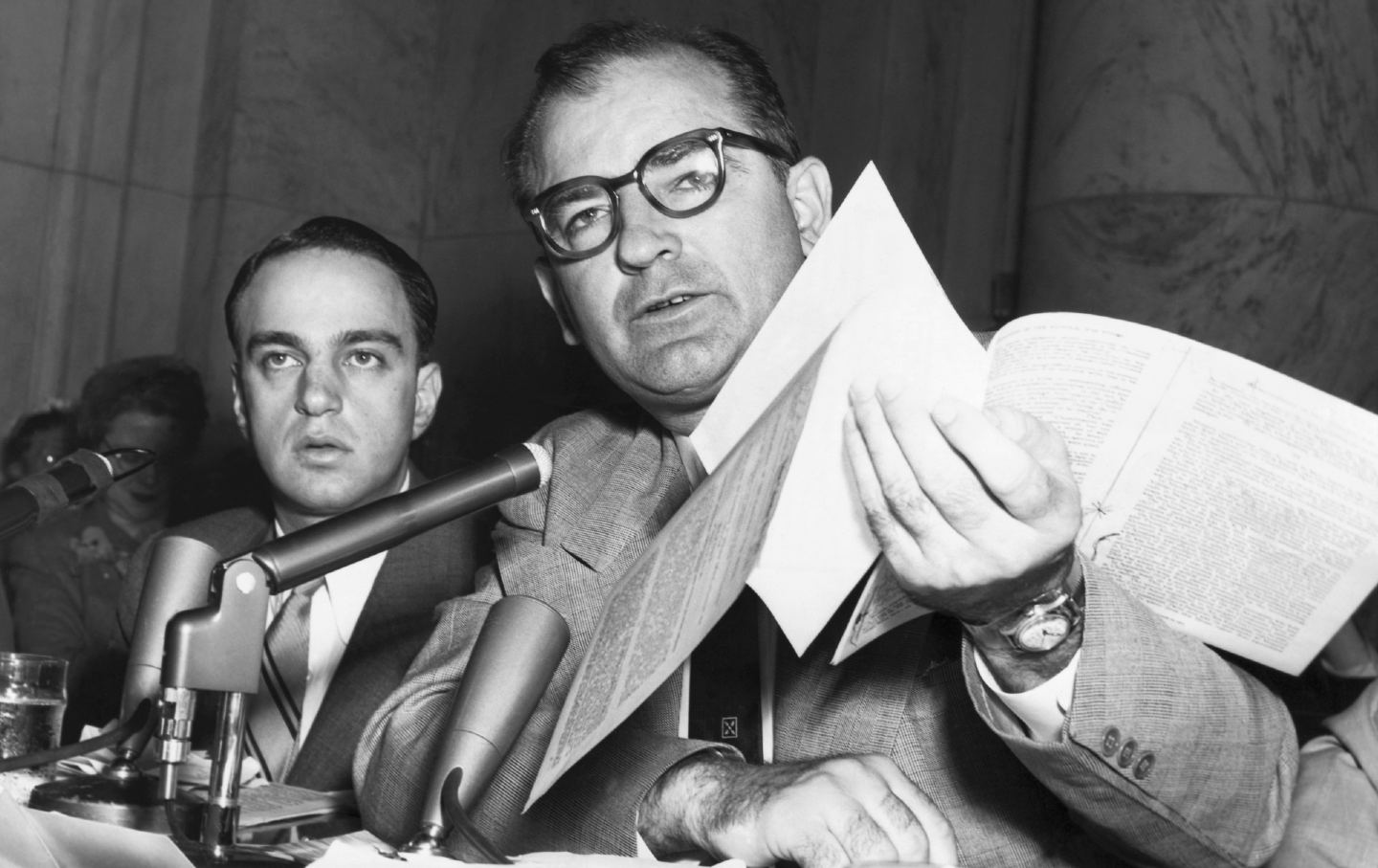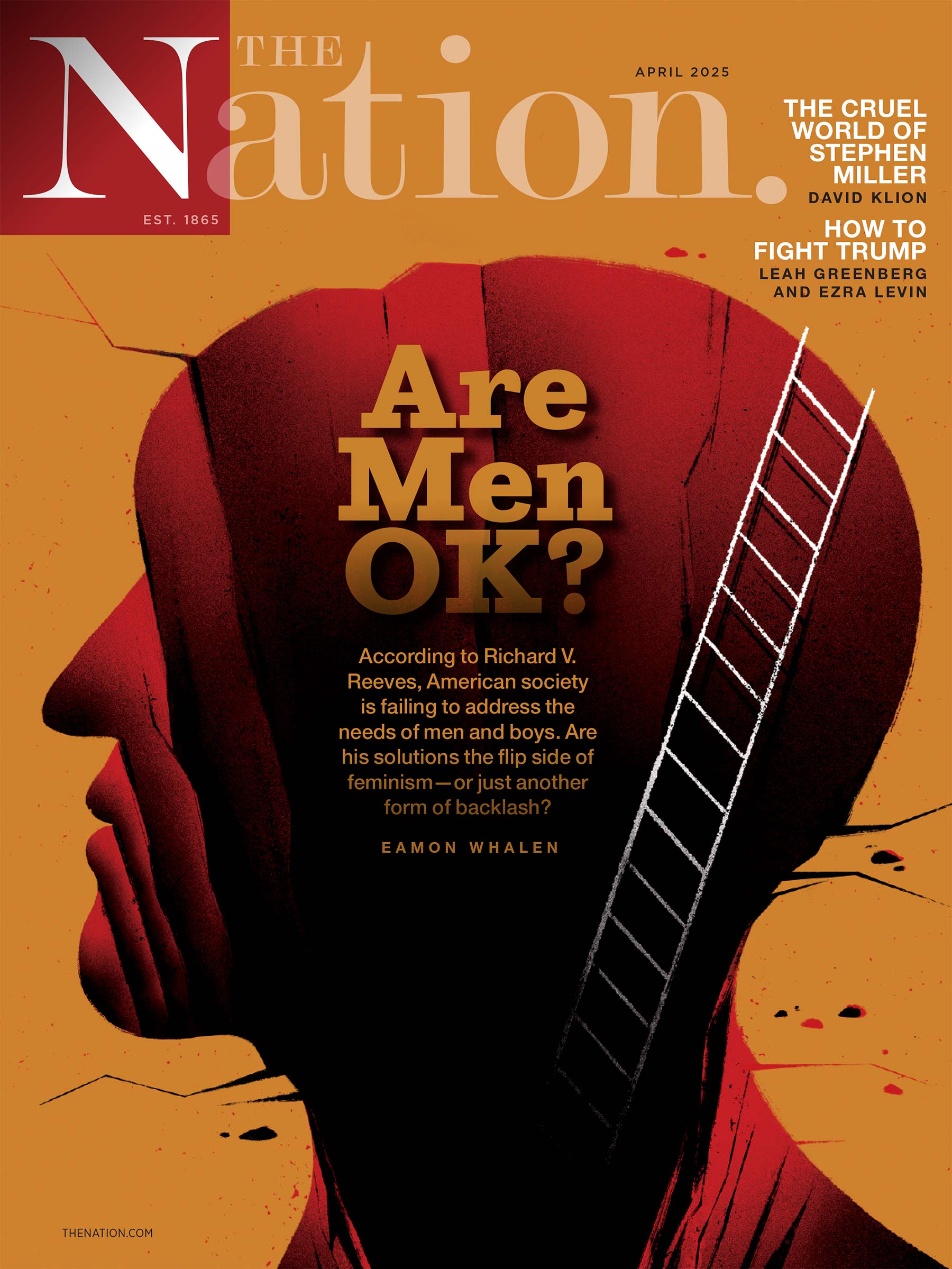The target then was the nonexistent threat of Communist teachers; today, it’s the supposed radicalism of the academy and its alleged failure to fight antisemitism.

Even before the Trump/Musk administration unleashed its current blitzkrieg against the university, Todd Wolfson, president of the American Association of University Professors (AAUP), was describing MAGA’s campaign against higher education as the “new McCarthyism.” Wolfson was wrong. What’s happening now is far worse. The current wave of threats and attacks could actually—and is intended to—wipe out the American system of liberal higher education as we know it.
Even though today’s assault on the university is immeasurably worse than McCarthyism, similarities do exist. Both repressive movements emerged from the efforts of powerful right-wing forces to roll back the progressive social and economic reforms of an earlier era. In order to divert attention from their presumably unpalatable goals, those forces started a crusade against an inflated and demonized enemy which they offered to eradicate. In the late 1940s and the 1950s, the target was the nonexistent threat of Communist teachers; today, it’s the supposed radicalism of the university and its alleged failure to fight antisemitism. The success of both campaigns relies on economic sanctions—and on the collaboration of mainstream academic leaders.
Still, the differences between today’s attack on higher education and that of the 1950s are undeniable—and make the current situation so much worse—for two main reasons.
The first is that, unlike McCarthyism, which focused only on the past political activities of individual professors, the current onslaught, led off by the not inconsiderable power of the federal government, touches almost every aspect of higher education. Besides the crackdown on campus protests against Israel’s war on Gaza and the threatened deportations of students and faculty members, it also reaches into classrooms, laboratories, curricula, libraries, dormitories, DEI programs, admissions offices, personnel decisions, athletics, accreditation agencies, and even—as in the remaking of the New College of Florida from liberal campus to conservative bastion—entire institutions.
The other reason today’s attack on the university is worse than McCarthyism is that, despite higher education’s much larger footprint within American society, today the academy is in a much weaker position to resist political intervention. The Cold War Red Scare occurred during what historians call academia’s Golden Age. Colleges and universities had considerable prestige and were expanding exponentially, while politicians at every level were throwing money at them. But since the late 1960s, the combination of a powerful right-wing backlash against the student movement and the concurrent imposition of a neoliberal regime of austerity has undermined the academy’s financial stability and undercut its public support.
During the late 1940s and the 1950s, at least 100 professors were fired and blacklisted for political reasons. Most had tenure. And most had once been in or near the Communist Party—but had more or less dropped out. They would have been perfectly willing to talk about their own political activities, but not about those of others—and their administrations knew it. But so powerful was the taint of communism that every institution that housed faculty members targeted by the inquisition felt compelled to investigate those people’s politics and supposed fitness to teach. Surprisingly, those panels never asked about anyone’s teaching and research.
Even so, a chill descended on American campuses. Professors censored themselves, pruned their syllabi, and avoided dealing with controversial subjects. And no one but the victims and a small coterie of left civil libertarians resisted the purges. This era of silent acquiescence ended in 1960, when students at historically black colleges and universities in the South staged the lunch counter sit-ins that revitalized the civil rights movement and then, four years later, the Free Speech Movement erupted when Berkeley students demanded the right to engage in political activities on campus.
By the mid-1960s, student and faculty activists were pushing to democratize the academy. They demanded greater access for African Americans and other underrepresented minority groups and—especially after the Vietnam War escalated—opposed their schools’ collaboration with the military-industrial complex. Within a few years, as student protests came to dominate the nightly news, a backlash emerged. Conservative politicians like Ronald Reagan took up the issue and promised to crack down on campus unrest. “If there has to be a bloodbath then let’s get it over with,” Reagan declared. State legislators in California and elsewhere proposed dozens of punitive measures and—even more deleteriously—began withdrawing their previously unstinting financial support.
Meanwhile, and at exactly the same time, the US experienced a major economic crisis that prompted its ruling elites to adopt a neoliberal political regime that glorified private enterprise and sought to shrink the entire public sector—universities included. Combined with the political backlash, that neoliberal restructuring brought austerity to academe. Administrators responded by pursuing wealthy donors and federal grants, while adopting the top-down managerial practices of the business community that all but eliminated faculty governance. And, of course, they raised tuitions, making college increasingly unaffordable and creating today’s $1.6 trillion student debt crisis. They also eliminated so many full-time tenured and tenure-track faculty positions that by now about 75 percent of the nation’s faculties consist of non-tenure-track, poorly paid, part-time, and temporary instructors with no job security or academic freedom and not enough time for their already struggling students.
Finally, what makes matters even worse for an already tottering system of higher education are the results of a well-funded 50-year-old campaign to undermine the university. After lavishing hundreds of millions of dollars on right-wing think tanks, journalists, and endowed professorships and programs, that campaign has successfully demonized the university and convinced much of the public that the academy is now a bastion of elitism run by out-of-touch radicals.
Today we are living with the legacy of a desperately weakened university as the second Trump administration wages an all-out war against higher education. Every day brings clever new attacks on academia’s autonomy and ability to conduct its ordinary operations that the academic establishment complains about feebly—if at all. Yet if the sprouts of resistance that increasingly pop into my inbox are any indication, the mass movement we so desperately need may already be in its early stages. Perhaps we have learned something from the past. During the Cold War Red Scare, there was nothing but silence.

